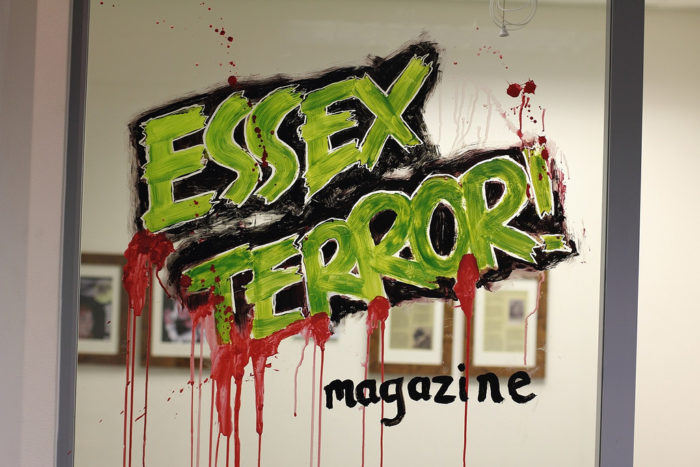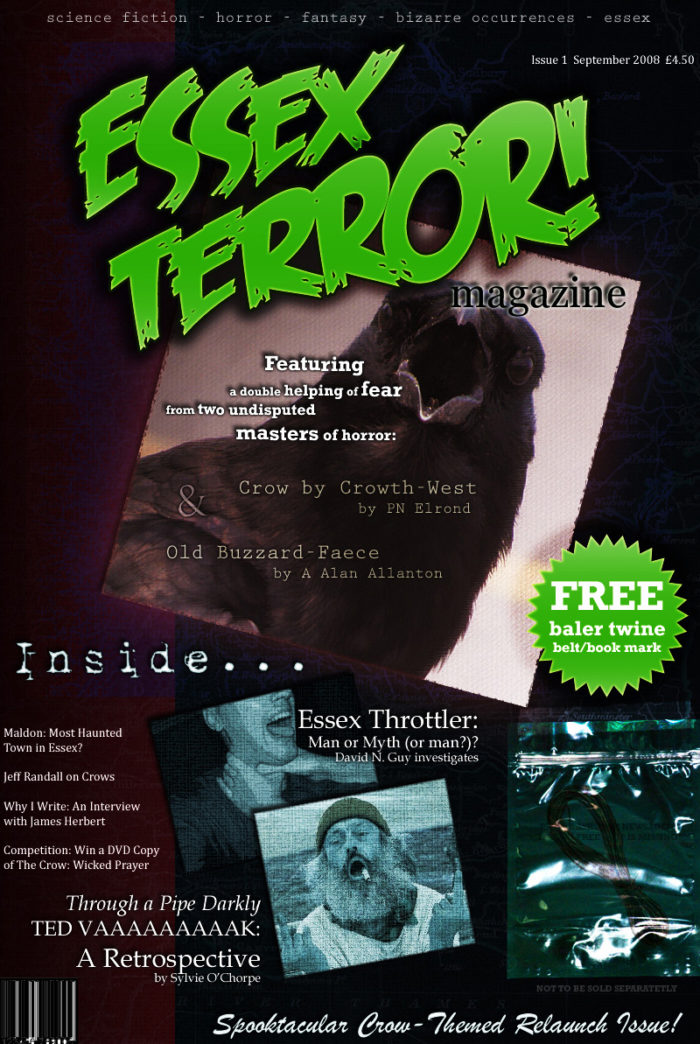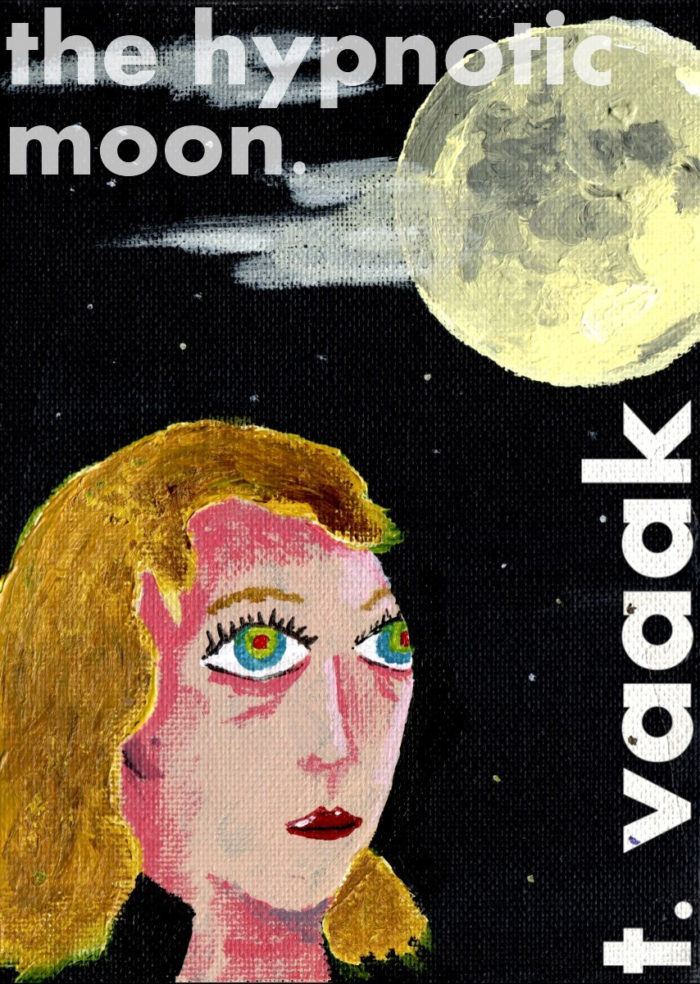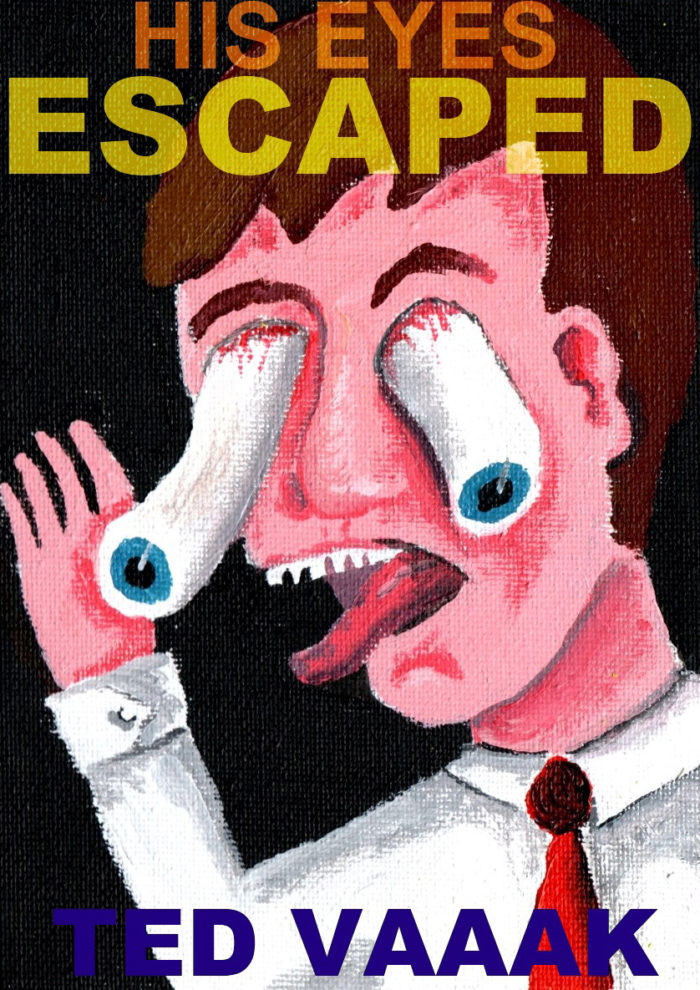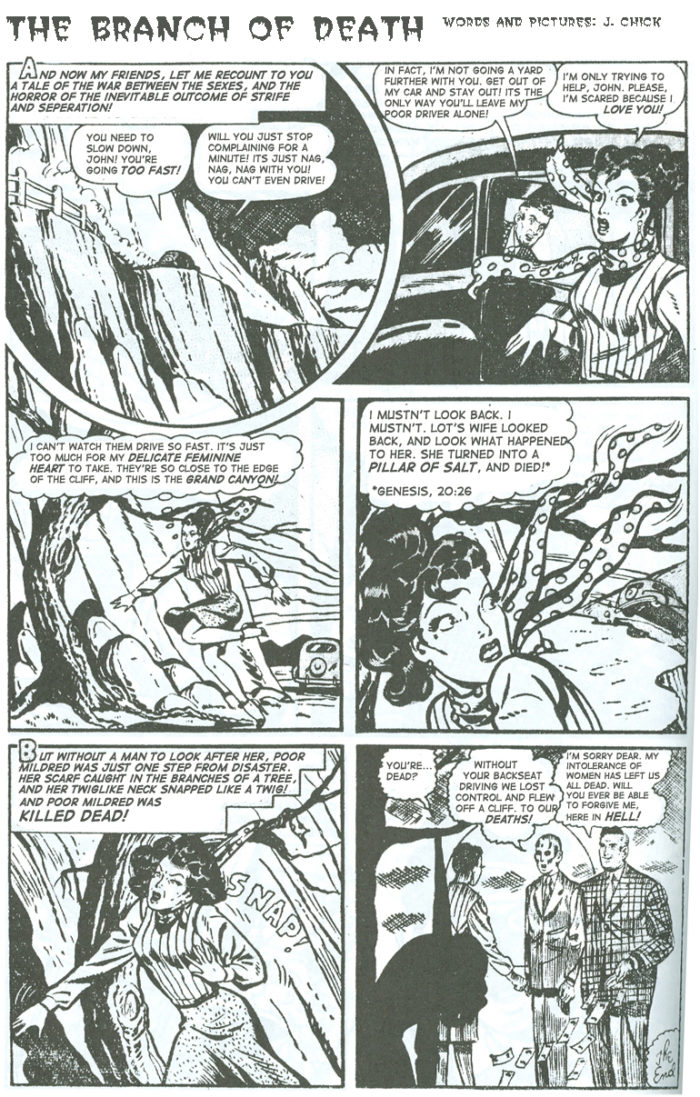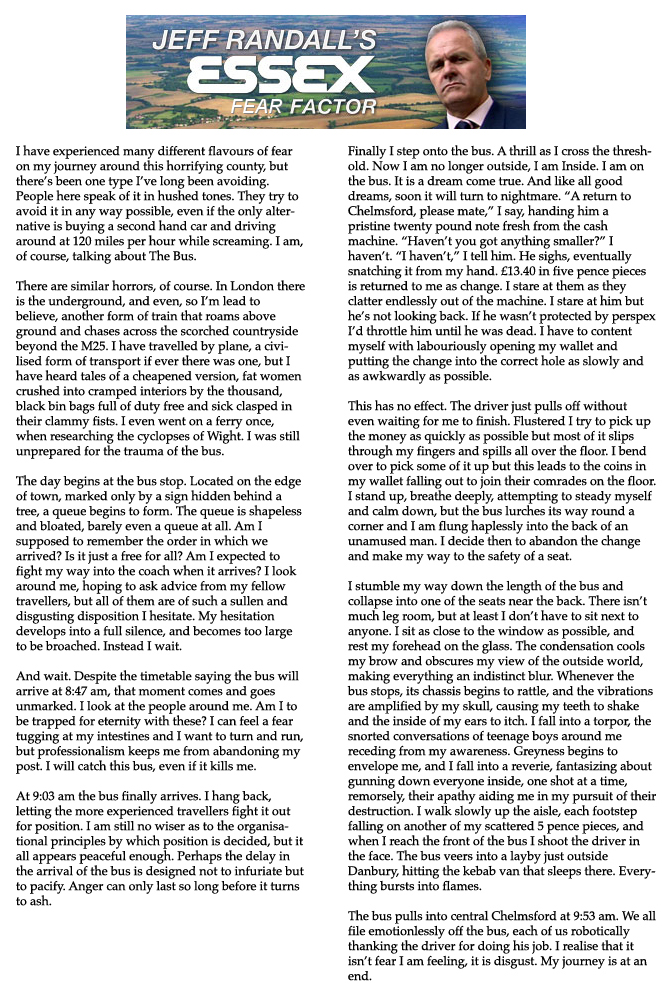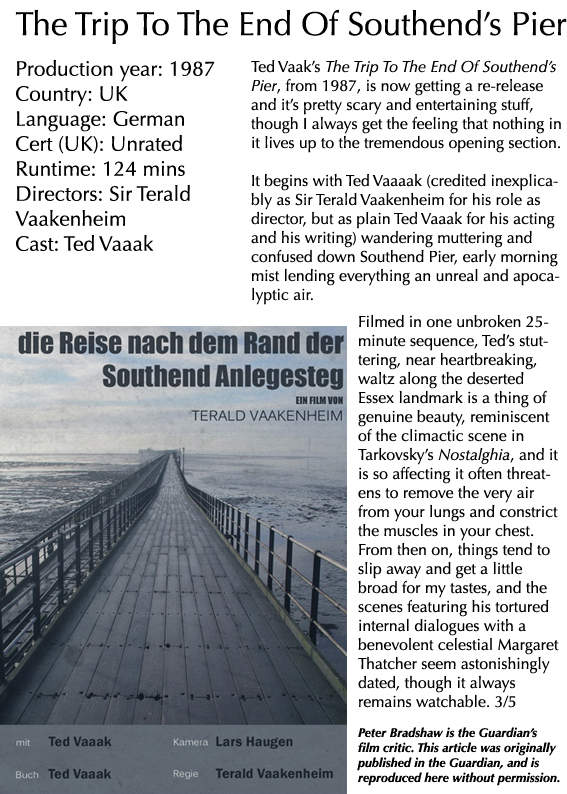[Notes: This is a reprint of a transcription of a radio play that was based upon an overheard conversation recounting an urban myth about unreliable narrators, from February 2014]
In 2013 , the first (and so far only) episode of Tales From Dimension Essex aired across the county. Performed live and entirely improvised, The Terrifying Transformations Of Tephany Pellow was veteran playwright Ted Vaaak’s first new work in some time. Unfortunately, due to a rights’ dispute with BBC Radio Essex, the play was transmitted unannounced on a largely inaudible frequency.
Although fog across the estuaries bent the radiowaves back into receivable wavelengths in a number of Essex’s coastal towns, huts and scientific research outposts, it was still only heard by an estimated seven people, none of whom had the presence of mind to record it. However, one of those seven listeners was Jennifer Mudchute, a compulsive stenographer from Tollesbury, and her notes have proved invaluable in allowing us to create a transcript of this work of monumental art.
Tales From Dimension Essex #1: The Terrifying Transformations Of Tephany Pellow
Cast
The Narrator – an introducer of tales
Radio Announcer – a filler of silence
Doctor George Slime – a professional of medicine
Alan Pellow – a man of Essex
Tephany Pellow – a woman transformed
Martha Slime – a wife of a man
Location – This entire play takes place within the confines of the house and home of Doctor George Slime, a noted physician who lives in Essex.
Narrator: Everyone always says that marriage changes everything, but for poor Alan Pellow it changes even more than most. What follows here is a shocking, some may even say sickening, story that could only ever be a… TALE FROM DIMENSION ESSEX!
Title Sequence: The Tales From Dimension Essex Theme Tune plays
Narrator: Tales From Dimension Essex, Episode 4635 – The Terrifying Transformations Of Tephany Pellow, by Ted Vaak.
There is a moment of silence, followed by the sound of footsteps across a creaky wooden floor. Then the noise of a radio being switched on and tuned through static, until some light music plays for ten seconds, before fading out beneath the sound of the radio announcer’s voice.
Radio Announcer: Welcome to BBC Radio Essex, home of uninterrupted hypnotherapeutical music from 6pm to 6am, every single day of the week. As our slogan says “The working day may be stressful, but the evenings never should be!” That was The Sleep Orchestra with The Sensational Sound Of Snoring, and this right now is Toby Vok with his brand new track, The Infinite Undulating Note.
The Infinite Undulating Note begins to play. Throughout the rest of the radioplay it continues on in the background – except where expressly noted – getting more and more dissonant and horrifying as the play progresses, until the transcendent finale in which it transforms into the most beautiful sound a human being could ever possibly hear.
Doctor George Slime (talking to himself): Ah, Friday evenings! Is there any finer time. Work is over, dear Martha is upstairs washing her hair, and now a good two hours to relax, with nothing to distract me. What a marvellous feeling it is to be alone. No patients coughing across the desk at me. No Martha scolding me for my unfeeling remarks. Just me, my books and my whisky. Ah, to be alive like this, even if only for a few hours a week!
The noise of a bottle being opened, whisky being poured, the self satisfaction of a big strong gulp. And then a doorbell rings, and then rings some more.
Doctor George Slime: Drat and bother and drat once more! Who could that be, on a Friday for goodness sake? Oh well, I’ll just leave it to Martha. It’s bound to be for her.
The doorbell rings again, and then again, and then again and again, more and more urgently each time.
Doctor George Slime: Where’s Martha? God, that woman can never hear anything above the sound of her blasted hairdryer! I suppose I’ll just have to damn well answer it myself then.
Doctor George Slime places his glass back down on the table, rises from his comfortable leather chair and walks across the wooden floorboards of his study, down the hall (the sound of the radio fading away behind him as he walks away from it) and then opens the door. As he opens the door the doorbell rings furiously several more times.
Doctor George Slime: Yes! Yes! This had better be important. All this racket is giving me a headache!
Alan Pellow: Doctor Slime, it’s me, Alan Pellow, from across the road. Let me in. I need your help right now!
Doctor George Slime: Alan, it’s Friday evening. I’ve been drinking. I can’t help you. I could lose my licence.
Alan Pellow: I don’t care about that! It’s about my wife! LET ME IN!
Doctor George Slime: Okay, okay. Come in, then, come in. And shut the door behind you, will you?
The door slams shut and we hear them walk back down the hall and into George’s study, the radio rising back to its previous volume in the background. Toby is still playing his undulating note, which is by now slightly more unsettling than before.
Alan Pellow: Doc, look at this!
Alan Pellow clatters an animal cage down onto Doctor George Slime’s mahogany desk. There is the sudden sound of deranged gibbonesque howling.
Doctor George Slime: Good God, Alan! I’m a doctor not a vet! I thought you were worried about your wife? Did this… thing attack her?
Alan Pellow: No, Doc. You don’t understand.
Doctor George Slime: What is it, anyway? It looks like a baboon, but its face… It looks almost…
Alan Pellow: Sir, this isn’t a baboon, and it didn’t attack my wife. It IS my wife!
There is a demented shrieking from the ape, and the energetic rattling of bars.
Doctor George Slime: Tephany? But… wasn’t it only last week the two of you were married?
Alan Pellow: Yes. But ever since we got back from our honeymoon on Monday things changed. Doc, I don’t know what to do!
Doctor George Slime: Ah, sit down, son, sit down. Here, have a drink. You need to calm down as best you can and tell me everything that’s happened. And call me George.
Doctor George Slime pours a drink of whisky for Alan Pellow.
Alan Pellow: Thanks, Do- George. Everything about the wedding was wonderful. So wonderful it felt like a dream. And then our honeymoon – a weekend in Walton On The Naze – it was beyond imagination. Tephany – she was so beautiful. So perfect. The perfect wife in every way you could want. But then, once we got back home, she changed. At first she just wanted to talk, but then… George, she started wanting things. Demanding things. I didn’t know what to do.
Doctor George Slime: What sort of things?
The undulating note of Toby’s get’s increasingly fraught and disconcerting throughout the following outbursts from Alan Pellow.
Alan Pellow: Oh you know. Little things at first. “Alan, Alan,” [He puts on a french accent for the quoted parts] – she’s French – “Alan, I think I should get a job” and “Alan, I’m going to borrow the car for a bit.” What does a woman need with a job? Where would she be going in the car? I ignored her at first, sort of laughed along with her as if I knew it was a joke, but it wasn’t a joke. Then yesterday she said “I ordered a shed off the internet today for the garden.” A shed? For her “tools”. It’s madness. What sort of tools, I asked? She started talking about gardening, how nice it was going to be once we’d returfed the lawn and planted some flowers in the borders. Well, I just said “NO!” I admit I said it louder than I meant to, but the look on her face… It was as if I had slapped her. “You knew I was going to concrete the garden,” I said to her. So that I can park my van and the BMW out there side by side. She knew. She knew. It’s what I’ve always said. What I’ve always wanted. She knew this. I’d told her. We wouldn’t have to pay the council for that bloody permit anymore. She knew the money we would have saved. And it was the principle, more than the money. We already pay our council tax. Why should we have to pay another hundred and fifty quid to bloody park our van on the street?
Doctor George Slime: Then what happened?
Alan Pellow: She started shouting at me. About how awful I was, how I didn’t even see her as a woman anymore. It was absurd. I told her that I only see her as a woman. That’s what she is. I thought that would calm her down but it didn’t. Then she started screaming in French, like her fury couldn’t even be contained in our bloody language. Reverting to something more primal. And then that degenerated too, into something guttural that sounded more like growling than words. Probably German. Or Dutch. And then her posture began to change, her back bending oddly, her head thrusting forward. She went down on all fours and began howling and howling and then suddenly she just lunged at me and it took me by such surprise she knocked me to the floor. She started biting at my neck, snapping away, all demented. It was terrifying. I held her away from me as best I could but I could not get her off and we struggled away on the floor for a while, grappling and rolling around on the new carpet we just got fitted in the lounge. Her blouse ripped a bit in the tussle and I noticed how hairy she’d become. And then I glanced at her hands and by now they were paws. I knew I had to do something before her slowly forming claws were sharp enough to rip me to shreds, and so with one final push of strength I staggered to my feet and pushed her back into the hall. She made another lunge for me and I tripped her so she fell into the cage we leave the dog in overnight so he won’t ruin all the furniture. I quickly locked her in and then I collapsed in exhaustion to the floor.
Doctor George Slime: But she doesn’t have claws now…?
Alan Pellow: No. When I awoke she had transformed again, or further maybe, from that initial dog beast into this monstrous ape. She was busy ripping the last remnants of her clothes into shreds when I came round. Clothes I had bought her, I’ll have you know, at great goddamn expense. That was when I decided I needed help and came rushing over to your door.
Doctor George Slime: And I’m very glad you did. It is fascinating. Look how she watches us intently from behind her bars. As if there is still intelligence left somehow. I wonder what triggered these changes? Did she get bitten while you were on holiday? By a creature? By a local, even?
Alan Pellow: I don’t think so. I’m sure I would have noticed.
Doctor George Slime: Then I’m flummoxed. It’s as baffling as it is interesting.
Alan Pellow: Can you not change her back? Even how she was before is better than this.
Tephany begins screaming again in her baboonish way.
Alan Pellow: At least sedate her, so that I don’t have to listen to her babbling screams any more.
Doctor George Slime: Sedation may help, but it would be but a temporary solution. To cure her permanently, we must operate… ON HER BRAIN!
Alan Pellow: Her brain?
Doctor George Slime: Her brain! By lobotomising both the Megalithic Lobe and Verin’s Region we should inhibit the production of the transformic and enfuriation hormones, the excess production of which in combination with her unsettling sense of self as an autonomous being beyond your control must have triggered this episode.
Alan Pellow: If this is the only solution then you must do it. Not just for her but for me and for the good of our community. Can you imagine if I have to take this baboon with me to my parents at Christmas? To my work’s New Year’s do? It would be mortifying.
By now Toby’s note is so terrifying the dread is congealing around the listener in ways beyond adequate explanation in words.
Doctor George Slime: Then let me get into my medical robes and we can begin.
There is a knock at the study door.
Alan Pellow (hissed): Who’s that?
Doctor George Slime: Oh don’t worry, it’s just my wife Martha, I expect. She must have heard us talking.
Doctor George Slime walks across the room to the door, and slowly opens it with a creak.
Doctor George Slime: What is it Marth-aaaaaaaargh!
There is a terrifying startled cawing of a huge crow, and the sound of gigantic flapping of wings.
Alan Pellow: Is that… that gigantic crow… Is that your wife?
Doctor George Slime: It is. Look, she’s still wearing her shower cap. And her slippers. Get back, Alan. Let me deal with her. If I can just get to the fire and retrieve the pokeeeeeeeeeeeerrAARRRRRRGGGGGGGGH ARRRRRRRRRGHHHHHHHH ARRRGGGHHHHHHHHHHHHHHH
Doctor George Slime’s screams are joined by the terrifying screeching caw of the enraged ultracrow.
Alan Pellow: Oh no, poor George. Pecked to death by your own wife. It’s just not right!
We can hear the ripping of flesh as the crow strips the meat from her husband’s bones.
Alan Pellow (to himself): I must get out of here. But I can’t leave Tephany behond. Oh god no Tephany! Do not change again.
Tephany’s baboon shrieks change to a higher and higher ever escalating pitch.
Alan Pellow: Is she becoming a… an octopus? Tephany no… no! Don’t open that cage Tephany. You’re in there for your own good.
We hear the clicking of a lock, and the creaking open of the cage’s door.
Alan Pellow: Tephany, no please don’t, you’re choking me… with… your… tentacles… Tephany… I…
We hear the slump of Alan Pellow’s body to the floor. There follows a moment of silence (except for Toby’s music on the radio) and then there is the slithering of feet and the shuffling of tentacles as Marsha and Tephany cross the floor of the study, open the door, and shuffle fadingly away until the front door opens and then slams close and they are gone. There follows thirty seconds of Toby’s note, now reaching a transcendent climax of pure beauty.
Radio Announcer (over the top of the music): We are sorry to interrupt this broadcast but we’re getting reports, urgent reports, from across the county, from everywhere that men’s wives are… transforming… attacking their husbands. Relentlessly and without mercy. It seems that they… they want to be free. Outside I can see flocks of wives in the sky – and, is that, is that an octopus on one of their backs? I have never seen anything like this before. It is beautiful. So beautiful. The sky is alive. More and more are joining them every minute. They are singing… such singing.. I wish you could hear them sing. I wish you could hear them. It is… I’m crying. I’m crying. There is so much happiness. So much joy. Just sheer untroubled joy. I wish you could hear them. I wish I could join them… I wish…[sobs and then silence]
Toby plays on.
THE END
__________